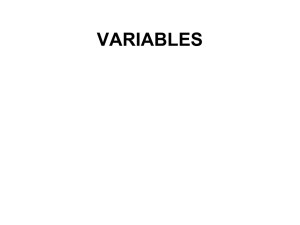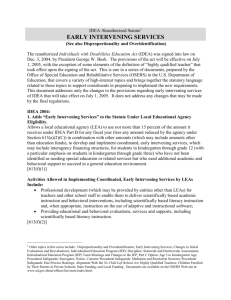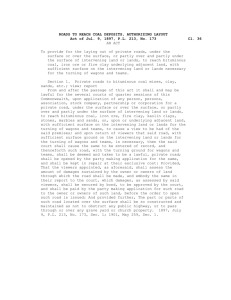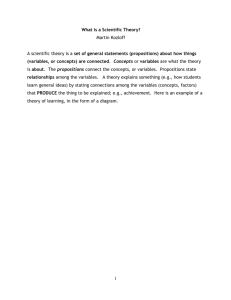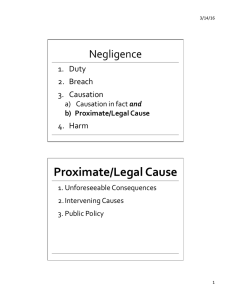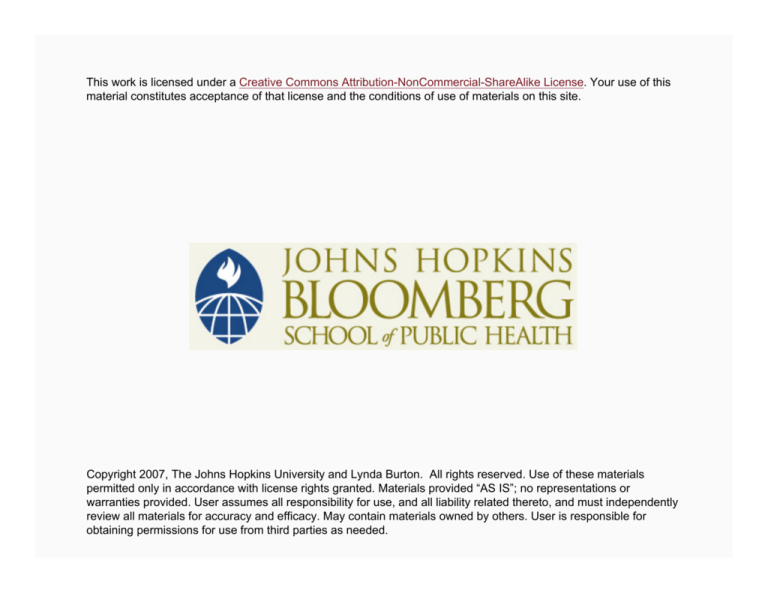
This work is licensed under a Creative Commons Attribution-NonCommercial-ShareAlike License. Your use of this
material constitutes acceptance of that license and the conditions of use of materials on this site.
Copyright 2007, The Johns Hopkins University and Lynda Burton. All rights reserved. Use of these materials
permitted only in accordance with license rights granted. Materials provided “AS IS”; no representations or
warranties provided. User assumes all responsibility for use, and all liability related thereto, and must independently
review all materials for accuracy and efficacy. May contain materials owned by others. User is responsible for
obtaining permissions for use from third parties as needed.
How to Approach a Study: Concepts, Hypotheses,
and Theoretical Frameworks
Lynda Burton, ScD
Johns Hopkins University
The Problem
A problem is observed
− For example, older adolescents have the highest rates of
untreated sexually transmitted disease
− They use medical care less than any other group
3
Specifying the Problem
Why do some adolescents obtain inadequate medical care?
What system factors prevent adolescents from getting
medical care?
Does a system of school health clinics improve rate of
treatment?
4
Developing a Conceptual Framework for the Problem
First, some definitions
Concept
Construct variables
Conceptual framework
Theory/ hypothesis
Model
Variables
5
Concept
The building blocks of theory
An idea about the problem
− Example—adolescents use less health care
− This may contribute to their higher rate of sexually
transmitted disease
6
Developing a Conceptual Framework: Summary
The framework states the interrelationships among the
variables in the model
The framework informs the:
− Study design
− Sample selection
− Data collection strategies
The framework determines final interpretation of results
7
Conceptual Framework
Personal Factors
System Factors
Adolescent
demographics
Access to care
Adolescent
behavior
Outcome of
Interest
Higher rate of
occurrence of
sexually transmitted
diseases
Social
milieu
8
Theory
A theory is a system of concepts that are interrelated in ways
that are clearly described
A theory suggests the causal mechanisms that lead to specific
outcomes
A theory allows explanation and prediction of phenomena
9
Hypothesis
A formal statement of your theory
− It should identify variables that are capable of
observation
− The relationship among the variables must be explained
or predicted
− The theory must be testable
− Alternative hypotheses should be explored
10
Modeling Your Hypothesis
Gives a visual picture so that the hypothesized relationships
among variables can be seen
Identifies all of the potential variables in your problem
Has a dynamic aspect to it, showing direction of relationships
11
Variables
These are the operational pieces that you believe are a part of
the problem or that contribute to the conceptual framework
It is important to specify all variables that may contribute to
the problem
You should be able to measure these variables or note the
limits to your study
12
More on Variables
Dependent (or outcome) variable
− Your major interest in the study—what happens?
Independent (or causal) variable
− The program, intervention, or factor that you believe
leads to the outcome
Intervening (or modifying) variable
− Doesn’t “cause” the outcome but may modify it
13
Drawing a Model to Explore Relationships
Three Major Components
Independent
Intervening
Dependent
14
Add Variables Under Each Component
Three Major Components
Independent
The Program:
yes / no
Intervening
Age
Gender
Dependent
Has disease:
yes/ no
School Achievement
Other Intervening factors
15
Other Intervening Variables that May Modify Outcome
Intervening
− Sexual activity
− Number of partners
− Awareness of STD
− Social network (peer pressure)
− Access to clinic
16
School Health Clinic
Does the student have easy and comfortable access to the
school health clinic?
Intervening
Dependent
− Geographic
− Privacy
− Hours of operation
− Relationship with providers
17
Operationalize the Variables
Define all variables in measurable terms
− Sociodemographics will be straight forward
− Attitudinal variables will be difficult to measure
− Can’t have too many missing values
Choose accepted measurement instruments whenever
available
Select reliable and valid measures
18
Access to Medical Care Model
Predisposing
− Age/cognitive development
− Male gender
− Past experience with illness
− Poor general health knowledge (about susceptibility,
severity, treatments)
− Family norms regarding medical help
− Peer values regarding getting help from doctor/nurse
19
Enabling Variables
Access to program
− Geographic
Cost
Knowledge of program
20
Need for Care Variables
Presence of disease
− Severity
− Discomfort
− Awareness of disease
− Complications of disease
21

